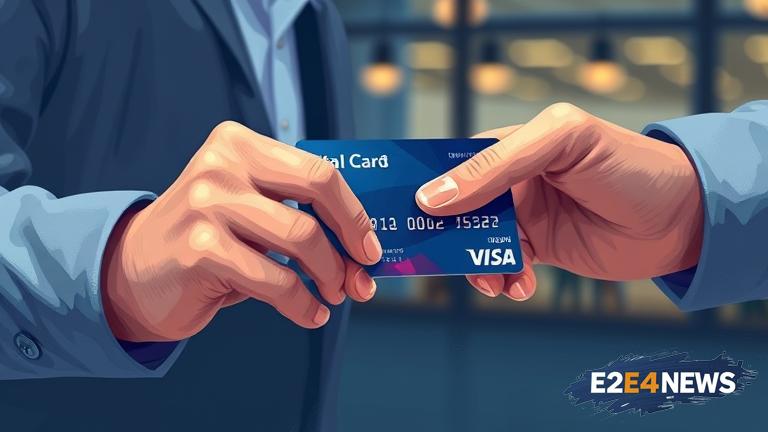In recent years, the financial landscape has undergone a significant transformation, with the rise of digital payment solutions revolutionizing the way businesses manage their expenses. One such innovation that has gained considerable traction is the virtual card, a digital alternative to traditional credit cards. Virtual cards have emerged as a game-changer for small businesses, providing them with a secure, efficient, and cost-effective means of managing their spending. By leveraging virtual cards, small businesses can take control of their expenses, streamline their financial operations, and make informed decisions about their spending. Virtual cards offer a range of benefits, including enhanced security, reduced fraud risk, and improved cash flow management. With virtual cards, businesses can set spending limits, track expenses in real-time, and receive instant notifications for transactions. This level of transparency and control enables small businesses to make data-driven decisions, optimize their spending, and allocate resources more effectively. Moreover, virtual cards eliminate the need for physical cards, reducing the risk of loss, theft, or damage. The virtual card platform also provides a centralized dashboard for businesses to manage their expenses, making it easier to track and reconcile transactions. Small businesses can also use virtual cards to pay suppliers, vendors, and employees, simplifying their accounts payable process. Additionally, virtual cards can be used for online transactions, reducing the risk of cyber attacks and data breaches. The use of virtual cards also promotes financial discipline, as businesses can set budgets and stick to them, avoiding overspending and reducing debt. Furthermore, virtual cards provide businesses with a detailed record of their transactions, making it easier to prepare tax returns and financial statements. The adoption of virtual cards is also driven by the need for small businesses to adapt to the changing payment landscape, with consumers increasingly expecting digital payment options. As the use of virtual cards continues to grow, small businesses can expect to see improved relationships with their suppliers, vendors, and customers, as well as enhanced financial management and reduced costs. In conclusion, virtual cards are revolutionizing the way small businesses manage their expenses, providing them with a secure, efficient, and cost-effective means of controlling their spending. By embracing virtual cards, small businesses can streamline their financial operations, make informed decisions, and drive growth. With the benefits of virtual cards becoming increasingly evident, it is likely that their adoption will continue to grow, transforming the financial management landscape for small businesses. The future of expense management is digital, and virtual cards are at the forefront of this revolution. As small businesses continue to navigate the complexities of financial management, virtual cards will play an increasingly important role in helping them achieve their goals. Whether it’s improving cash flow management, reducing fraud risk, or enhancing financial transparency, virtual cards are the perfect solution for small businesses looking to take control of their spending. With virtual cards, small businesses can focus on what matters most – driving growth, innovation, and success. In the world of finance, virtual cards are the new standard, and small businesses that adopt them will be well-positioned to thrive in a rapidly changing landscape.
